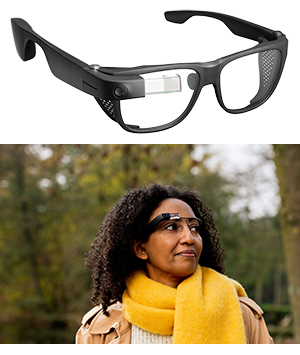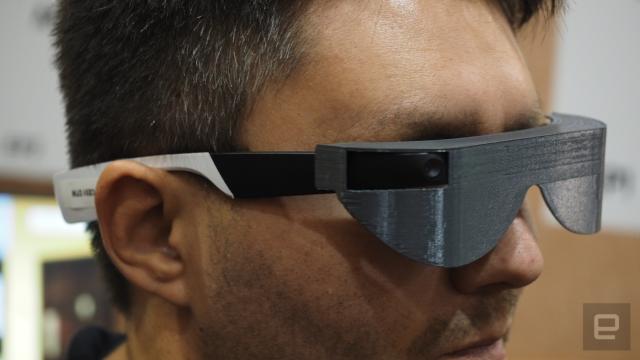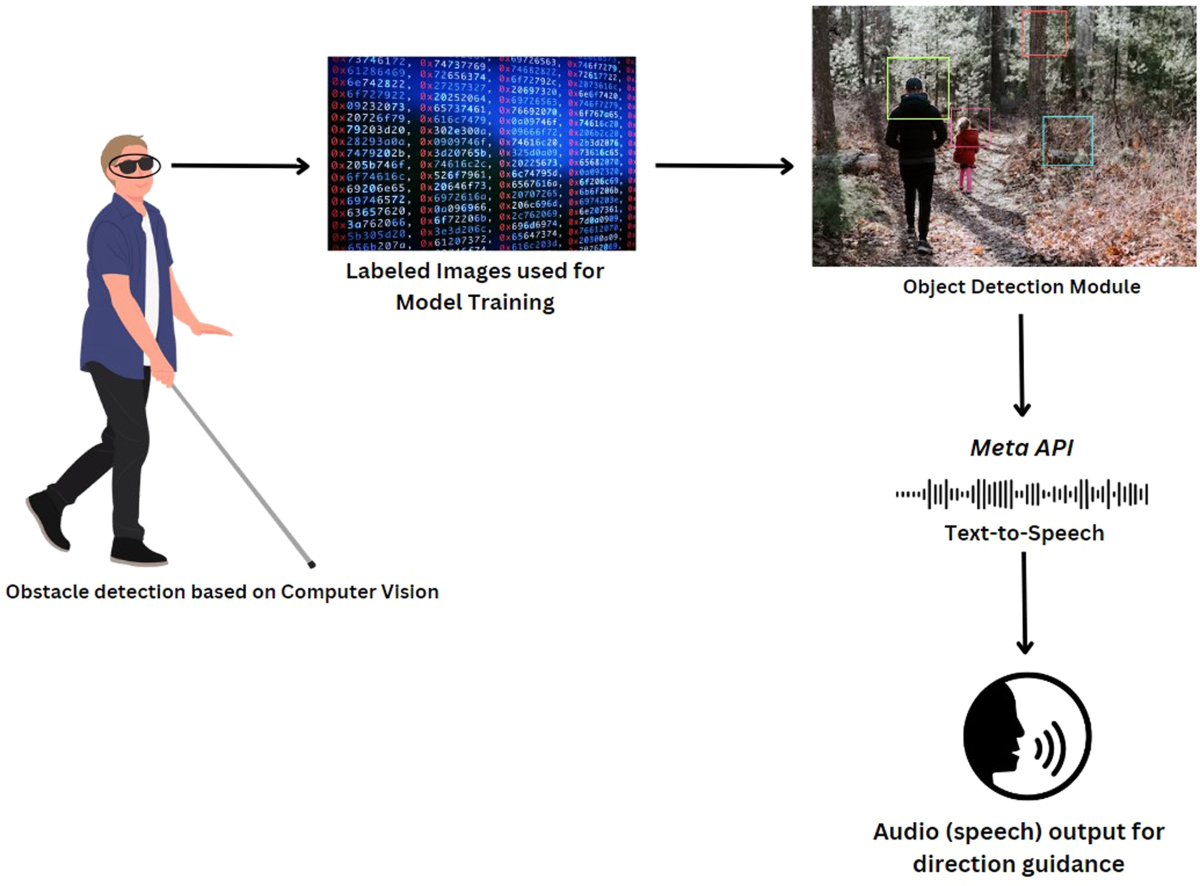Mobility Aids for Visually Impaired Users: Enhancing Independence and Navigation
Mobility Aids for Visually Impaired Users: Enhancing Independence and Navigation
Blog Article
Enhancing Availability Through Assistive Modern Technology for the Blind
The integration of assistive innovation for the blind represents an essential innovation in accessibility, fundamentally changing how people navigate their atmospheres and engage with culture. From screen viewers to innovative clever canes, these devices not only improve freedom however additionally advertise inclusivity in various rounds of life. As we explore the varied sorts of assistive devices and their substantial influence on day-to-day living, it ends up being crucial to check out how continuous technical advancements are reshaping the landscape of assistance for the blind community. What ramifications do these growths hold for the future of access?
Overview of Assistive Innovation
Assistive innovation describes a range of devices and software developed to enhance the capabilities of individuals with impairments, including those who are blind or aesthetically damaged. This technology plays an essential function in promoting freedom and boosting the high quality of life for individuals. By offering alternative techniques for accessing info and executing daily tasks, assistive innovation encourages people to navigate their atmospheres extra efficiently.
The advancement and execution of assistive technology embrace a selection of concepts aimed at cultivating ease of access. These principles include user-centered layout, which focuses on the needs and choices of the individual, and the integration of modern technology into everyday tasks. Such improvements make sure that assistive gadgets are not just functional however likewise user-friendly and simple to use.
Furthermore, assistive modern technology includes a varied range of remedies, from low-tech alternatives like magnifiers to sophisticated advancements such as screen visitors and Braille displays. The continuous advancement of this field is driven by the demand to resolve the one-of-a-kind obstacles dealt with by people with visual problems (Wearable technology for low vision). As technology continues to advance, the capacity for improving access and promoting inclusivity continues to be appealing, inevitably adding to an extra fair society

Sorts Of Assistive Devices
Various sorts of assistive devices are readily available to sustain individuals who are blind or aesthetically impaired, each made to resolve certain demands and difficulties. These gadgets can be generally categorized into 3 main types: low-tech, mid-tech, and sophisticated services.
Low-tech devices consist of products such as magnifiers, Braille labels, and responsive maps. These are reasonably easy devices that improve the user's ability to connect with their atmosphere without requiring intricate technology.
Mid-tech tools often involve more advanced functions, such as electronic magnifiers and mobile Braille note-takers. These devices can provide functionalities like speech outcome, enabling users to access info extra efficiently.

Influence On Daily Living
The availability of numerous assistive devices significantly improves the high quality of life for individuals that are blind or visually damaged, influencing their day-to-day living in profound methods. By integrating innovations such as display readers, Braille shows, and audio description services right into their routines, individuals gain higher freedom and self-reliance. These tools assist in accessibility to information, making it possible for people to carry out everyday tasks, such as reviewing emails, navigating public areas, and delighting in media material.
Moreover, assistive devices empower individuals to involve more completely in social communications and community tasks. The ability to use smart devices equipped with access features enables smooth interaction and connection with others. This connectivity promotes a feeling of belonging and lowers sensations of seclusion.
In expert setups, assistive modern technology supports productivity by allowing individuals to complete work jobs successfully. Devices like voice recognition software and specialized magnification devices enable individuals to join the labor force on equivalent ground with their sighted peers.

Advancements in Technology
Recent technological advancements have considerably transformed the landscape of tools offered for individuals who are blind or visually impaired. The assimilation of man-made intelligence (AI) and device knowing has generated applications that enhance navigation and things acknowledgment. Smart device applications can currently use AI to identify and describe environments in real-time, supplying users with valuable contextual details.
In addition, improvements in haptic innovation have brought about the advancement of clever walking sticks geared up with sensing units that find barriers and supply tactile responses. This equips optician vs optometrist users to browse their atmosphere with raised self-confidence and self-reliance. Technologies in text-to-speech software application and braille display screens have boosted the ease of access of electronic content, permitting for smooth communication with various media.
Wearable modern technologies, such as wise glasses, are likewise making strides in assisting aesthetic impairment. These gadgets can provide enhanced fact experiences, overlaying crucial info onto the customer's field of vision. Jointly, these innovations not only improve the quality of life for individuals that are blind yet also promote higher incorporation in society. As innovation remains to evolve, the capacity for even more transformative tools stays imminent.
Future Trends and Innovations
As innovation rapidly proceeds, the future of assistive tools for people who are blind holds enormous guarantee. Innovations in artificial knowledge (AI) and device understanding are positioned to change the method blind customers connect with their atmospheres. As an example, AI-driven applications are being established to boost object acknowledgment, allowing individuals to identify and navigate their environments with greater simplicity and precision.
Additionally, advancements in haptic comments modern technology are enabling the development of responsive maps and navigation aids that supply real-time details through touch. These advancements not just boost movement yet also foster self-reliance. Furthermore, wearable tools equipped with augmented truth (AR) features are emerging, providing individuals aesthetic details via sound descriptions, thereby bridging the space between the digital and physical worlds.
Additionally, the combination of wise home innovation offers brand-new possibilities for ease of access, allowing individuals to control their living environments via voice commands or smartphone applications. As collaboration in between tech developers and the blind neighborhood continues, the concentrate on user-centered style will certainly make certain that future technologies are customized to fulfill the one-of-a-kind demands of this populace (Wearable technology for low vision). The trajectory of assistive modern technology assures an extra comprehensive and empowering future for individuals who are blind
Conclusion
In final thought, assistive technology plays a critical function in enhancing access for individuals with visual disabilities. Continuous improvements in technology and user-centered layout ensure that these devices provide efficiently to the special needs of the blind neighborhood.
The integration of assistive modern technology for the blind represents an essential development in access, fundamentally changing just how individuals browse their environments and check involve with culture.Assistive modern technology refers to a variety of devices and software made to improve the capacities of individuals with specials needs, including those who are visually damaged or blind. Wearable technology for low vision.As technology swiftly advances, the future of assistive tools for individuals that are blind holds tremendous assurance. The trajectory of assistive innovation assures a click over here much more comprehensive and empowering future for people who are blind
In conclusion, assistive technology plays an important function in boosting availability for people with visual disabilities.
Report this page